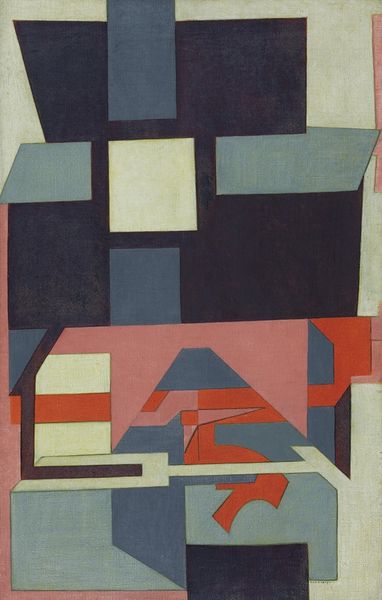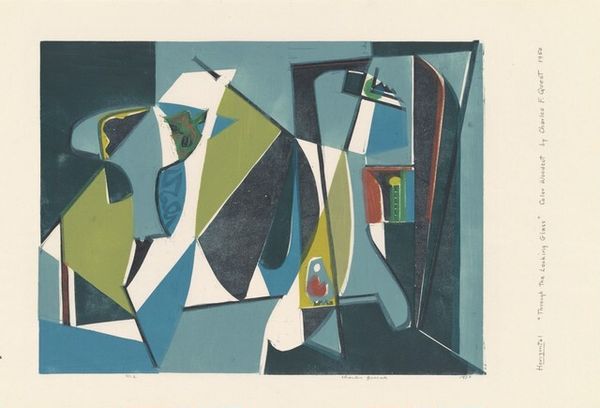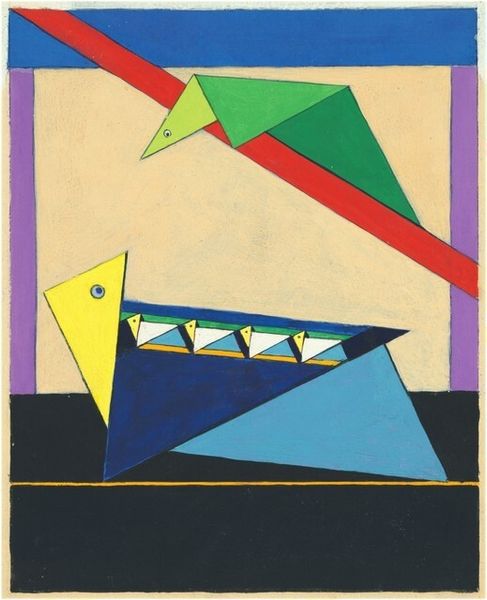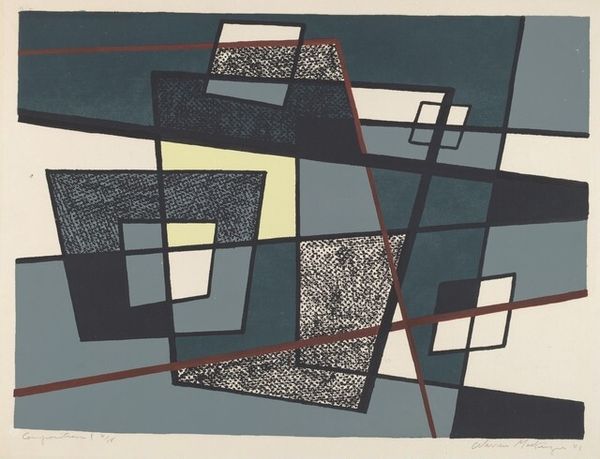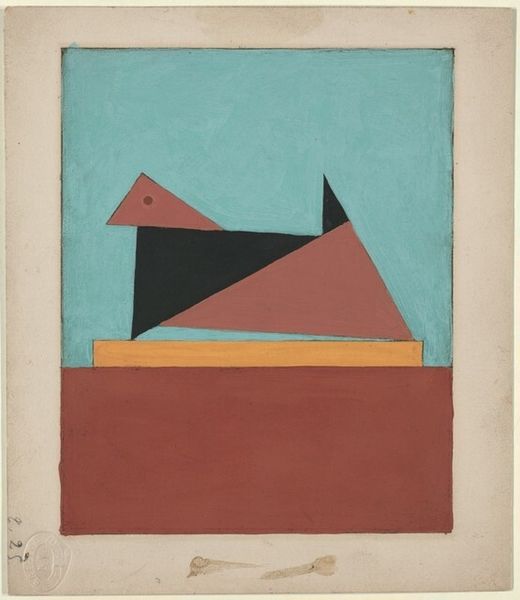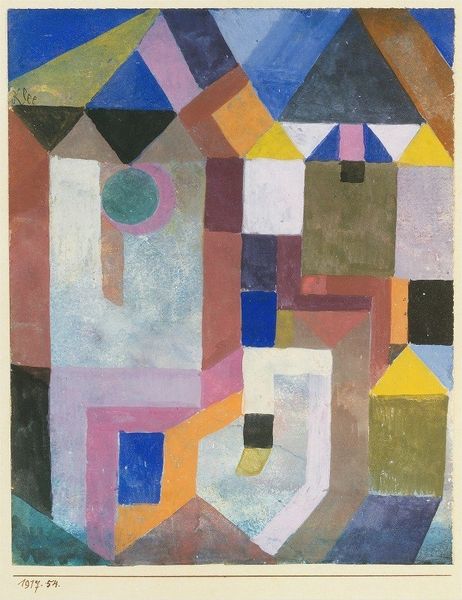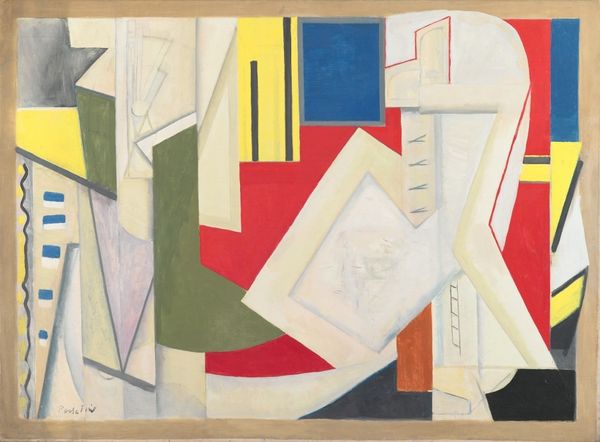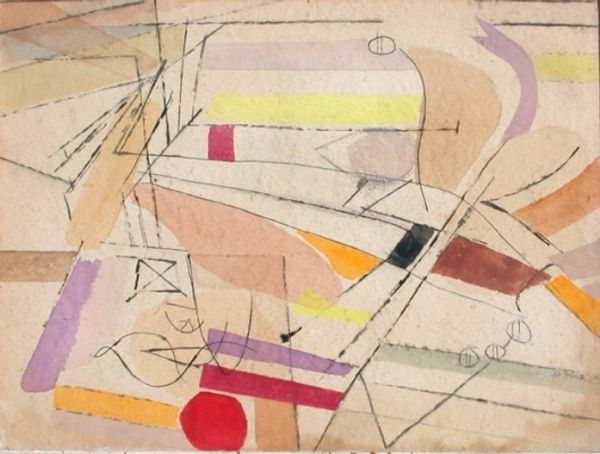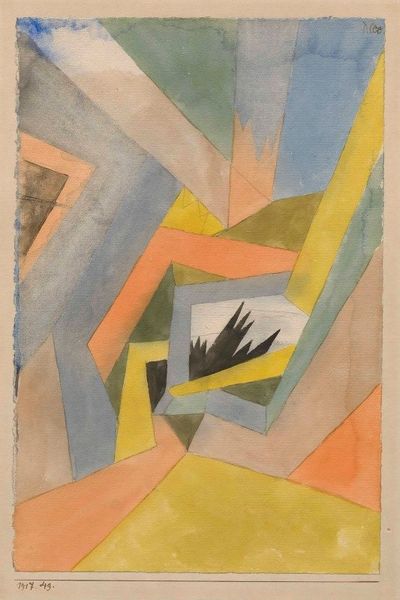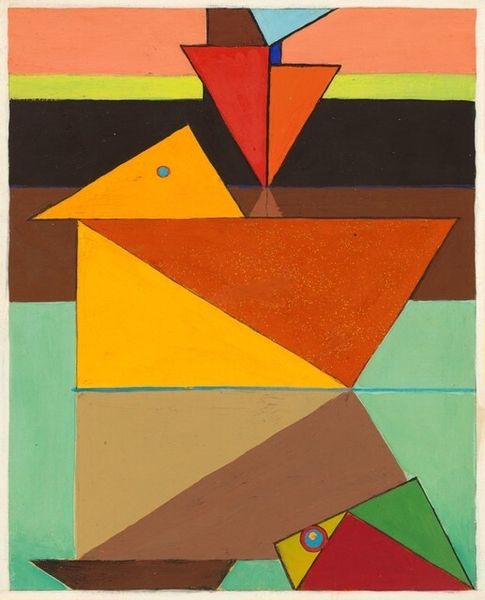
print, woodcut
#
cubism
# print
#
woodcut
#
geometric-abstraction
#
cityscape
Dimensions: image: 15.08 × 19.37 cm (5 15/16 × 7 5/8 in.) sheet: 16.35 × 23.34 cm (6 7/16 × 9 3/16 in.)
Copyright: National Gallery of Art: CC0 1.0
Curator: This is "Building in Space" a 1938 woodcut print by German-American artist Werner Drewes. He created this while working in the Federal Art Project. Editor: The fractured geometric planes feel disorienting and yet exciting at the same time, like a city being built, but also one that could easily fall apart. The bold, almost clashing colors add to that tension. Curator: Drewes work shifted away from expressionism towards abstraction after he was influenced by Bauhaus principles. And, his work during this period really exemplifies the anxieties around urbanism at the time. Think about the Depression Era. The city, previously understood as this space of opportunity, was now increasingly recognized as a space of mass poverty, displacement, and alienation. Editor: Yes, and Drewes does capture the disjunction between optimism and impending collapse doesn't he? The forms hover—there's no real groundedness. I’m drawn to the texture, though, particularly the wood grain. Curator: That texture reflects his dedication to printmaking as a democratic art. Accessible art production was central to the Federal Arts Project during the Depression. But despite the original motivations of this artwork being for public dissemination and consumption, Drewes work had trouble being widely recognized and supported. It makes you question the limitations of governmental support when attempting to intervene in art production. Editor: I suppose, I tend to focus more on what is included, instead of who funds it. I see echoes of Synthetic Cubism, how the interlocking planes build structure even without fixed perspective. You’re looking at multiple vantage points collapsed into a single picture. It's a really smart technique. Curator: Looking at “Building in Space," I am reminded about the larger context around New Deal art, and its complex place in shaping cultural memory in the United States. Editor: For me, it's the tension between the instability depicted and the material fact of this print; these flat shapes interlocking that creates a uniquely compelling sensation, making this composition all the more enduring.
Comments
No comments
Be the first to comment and join the conversation on the ultimate creative platform.
